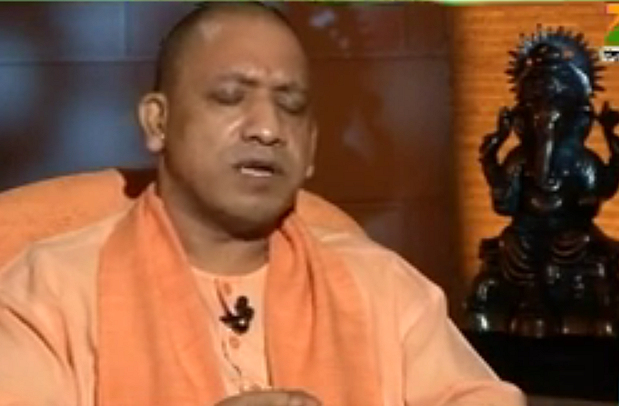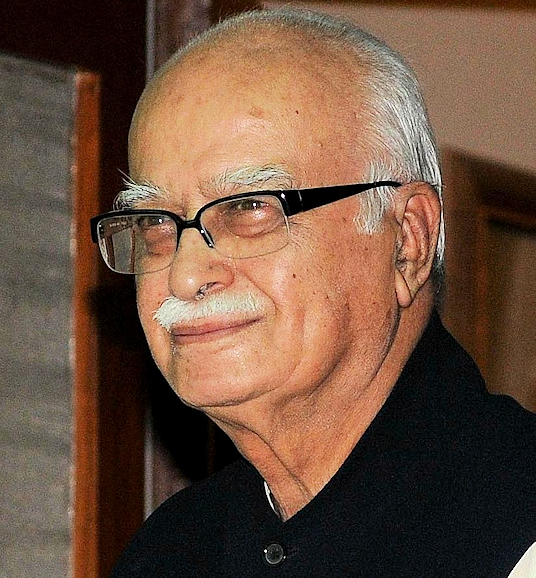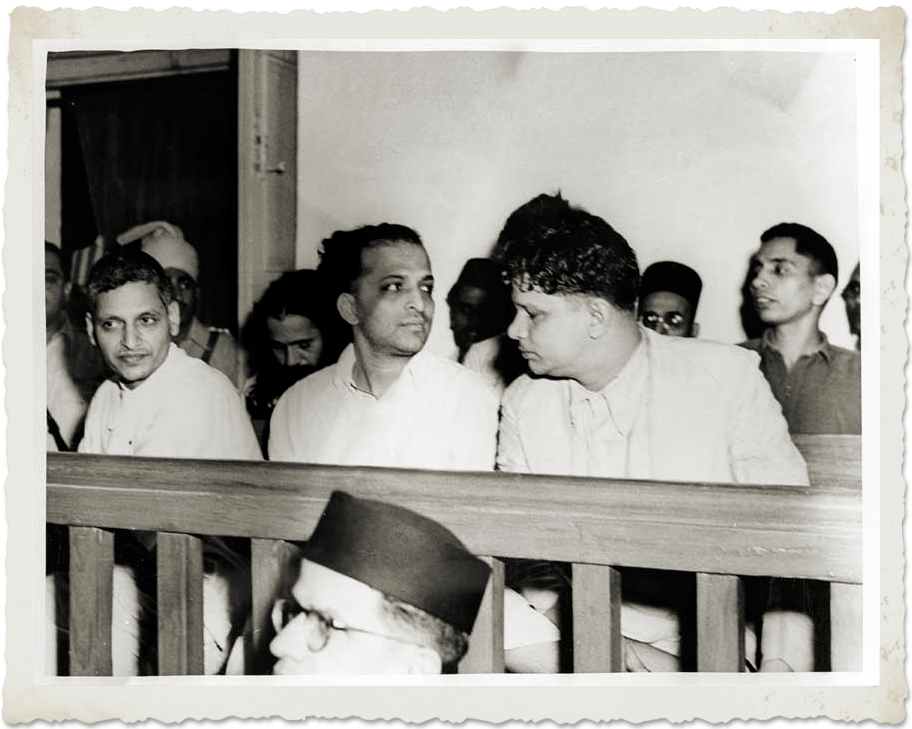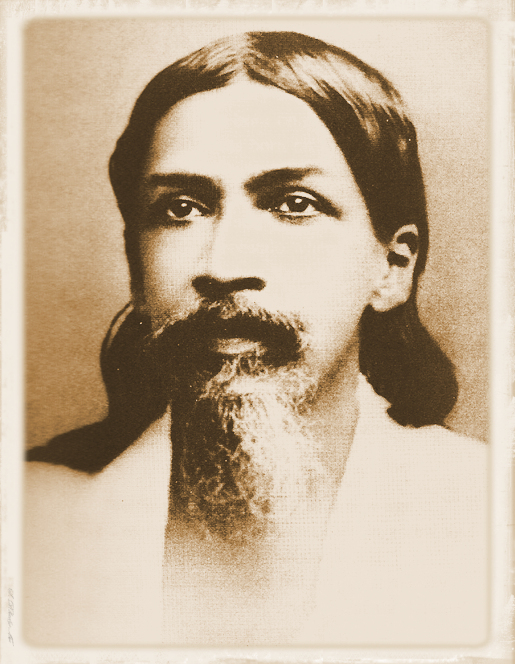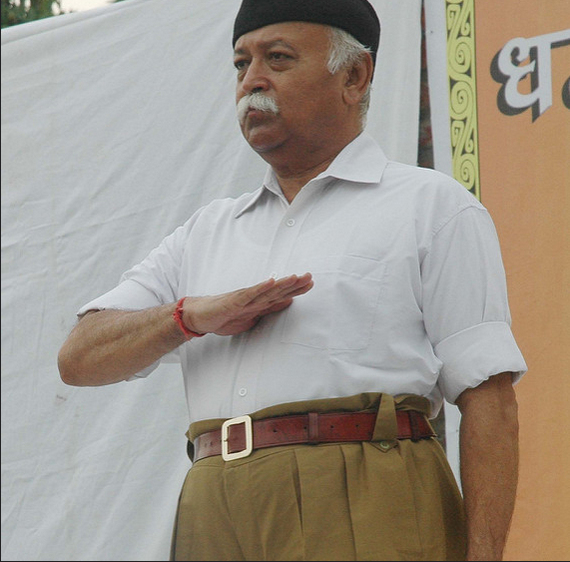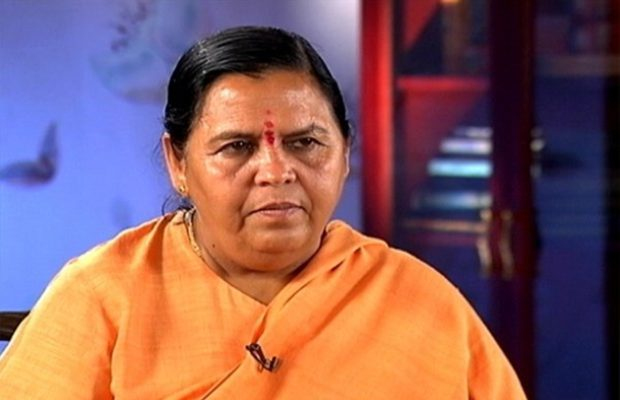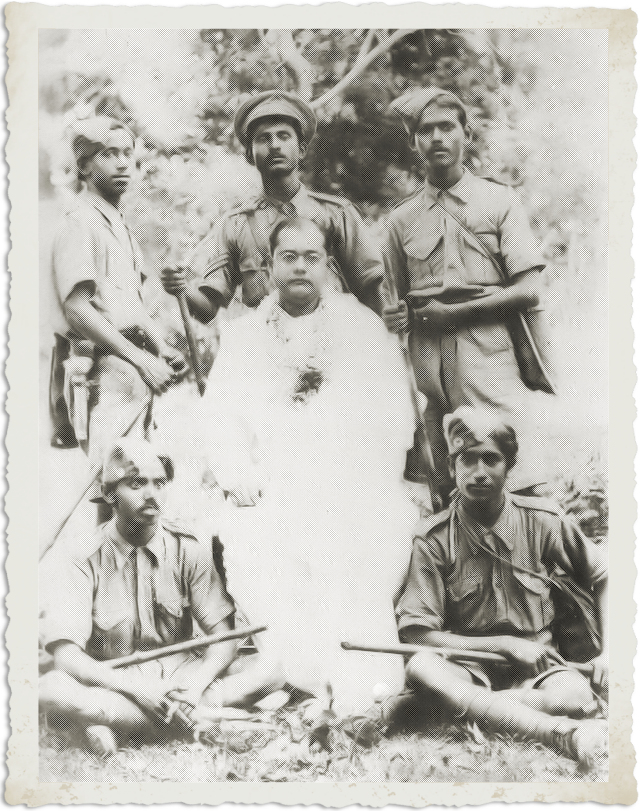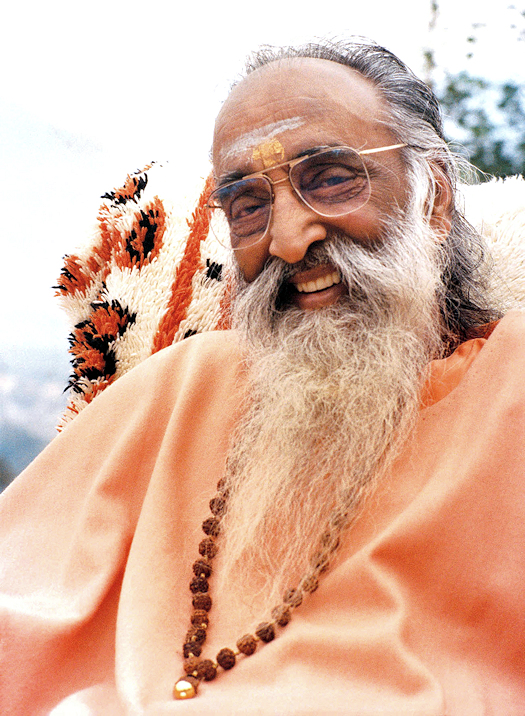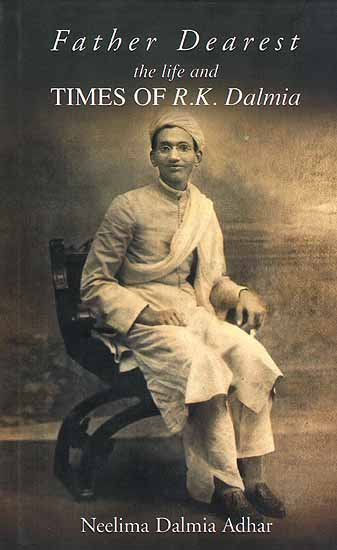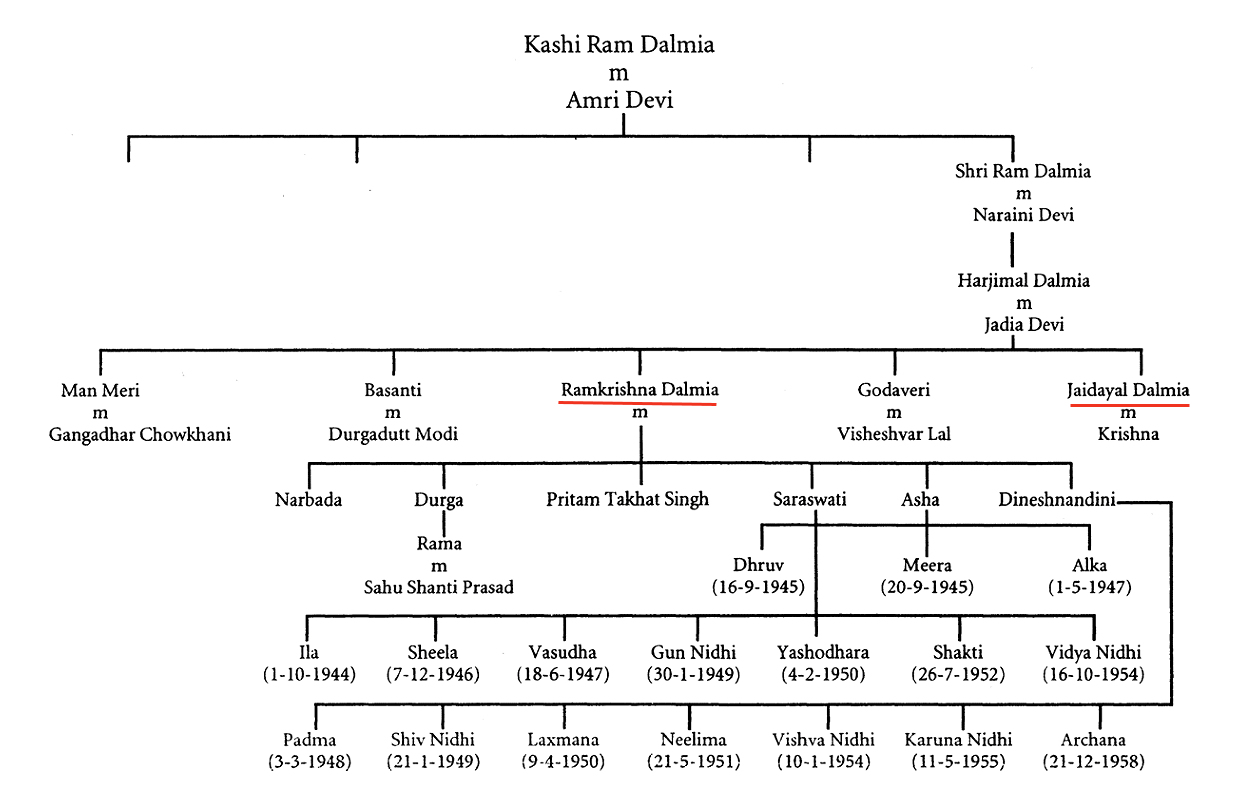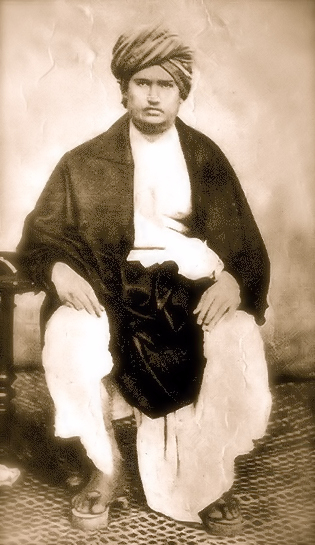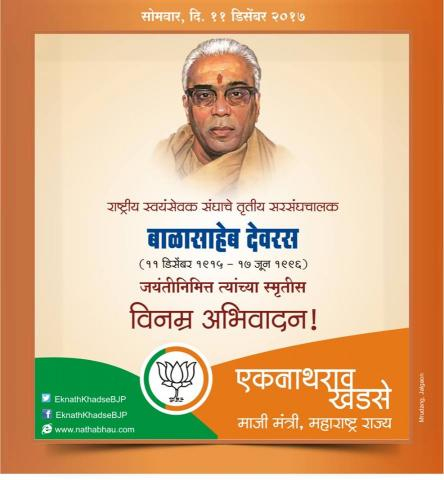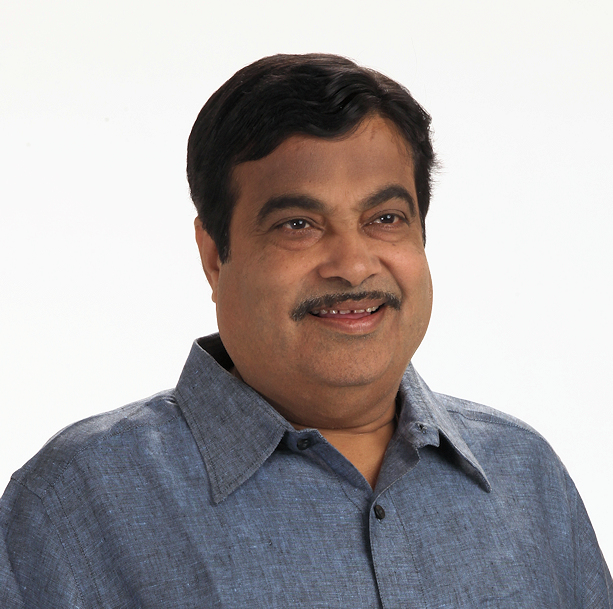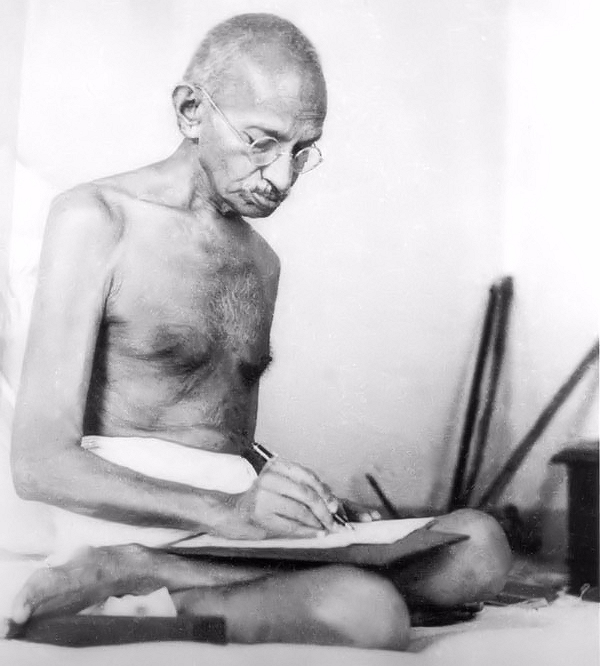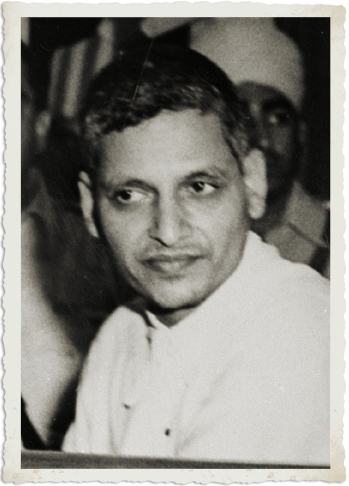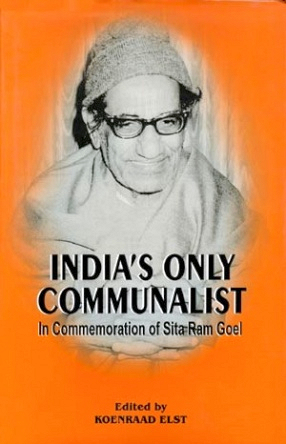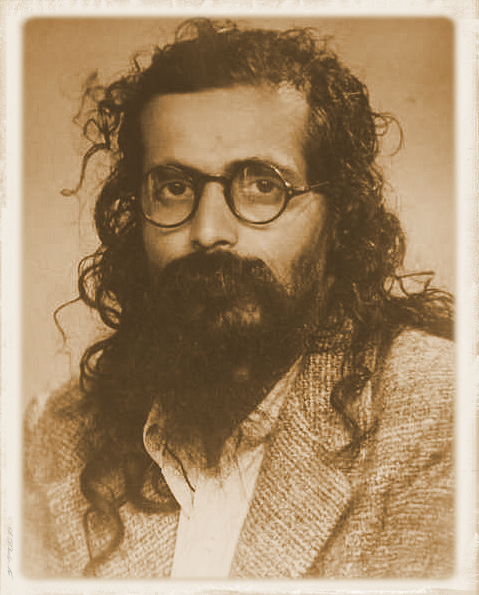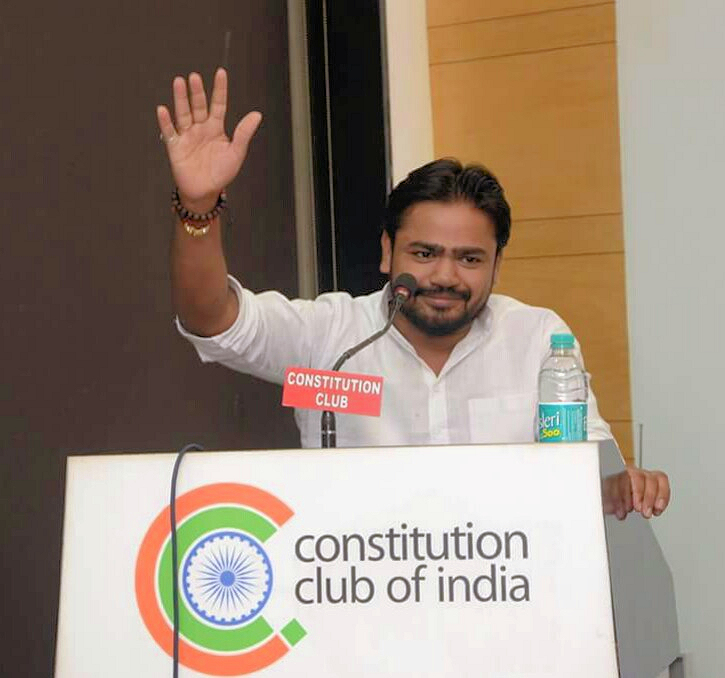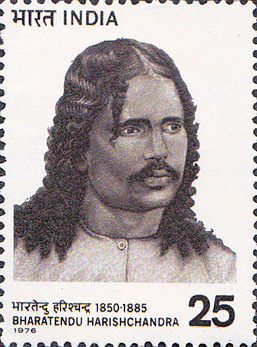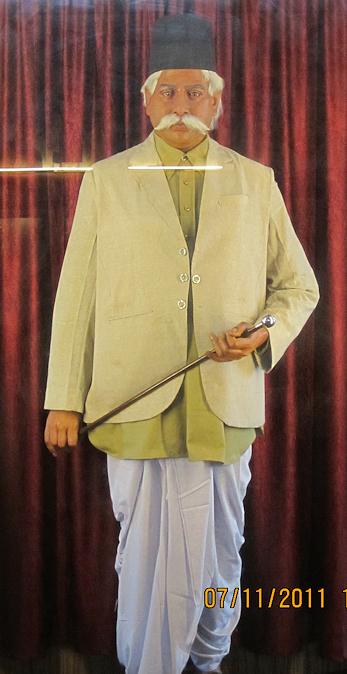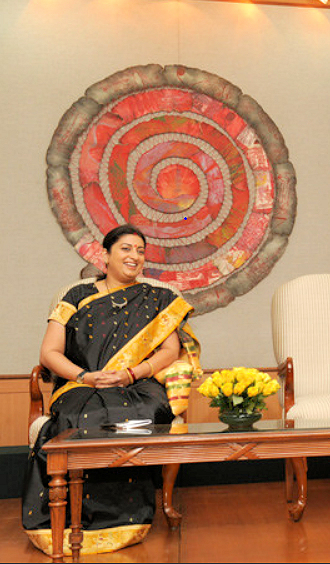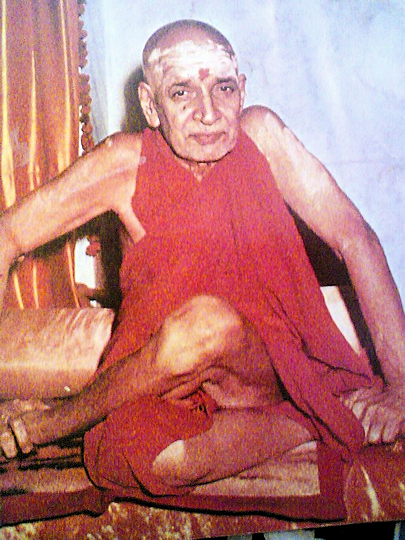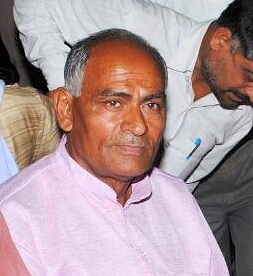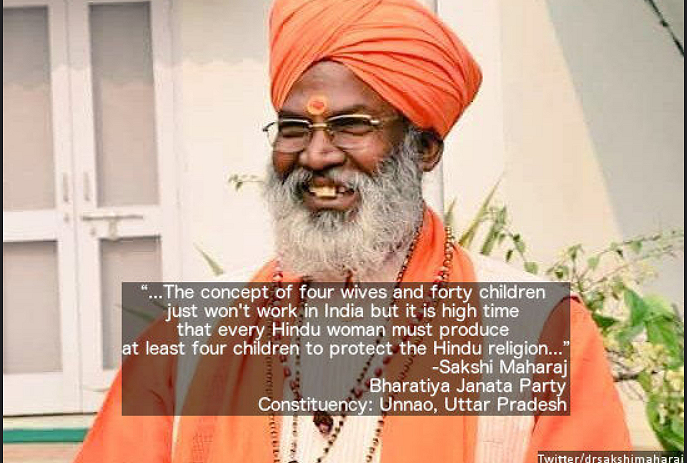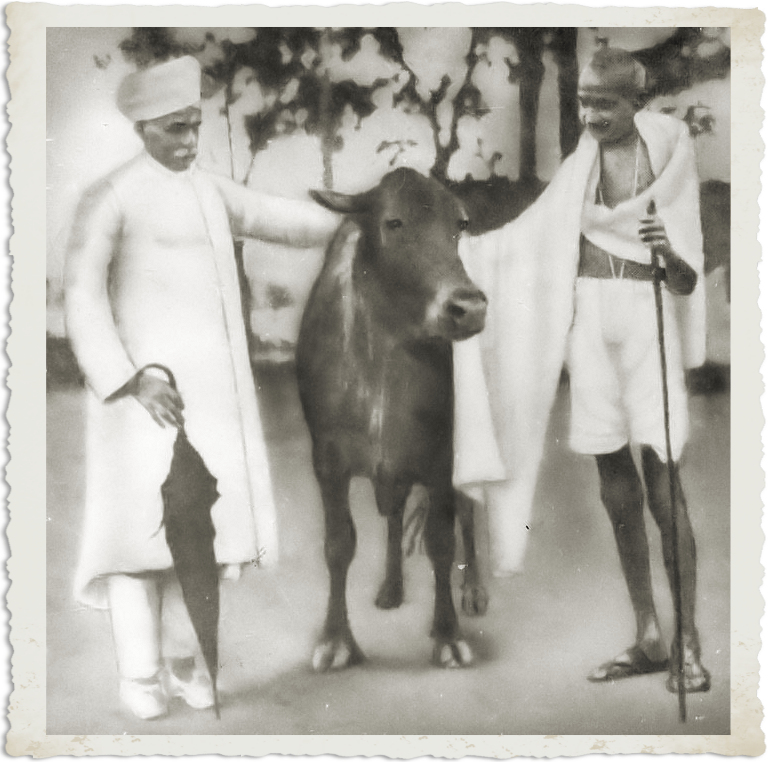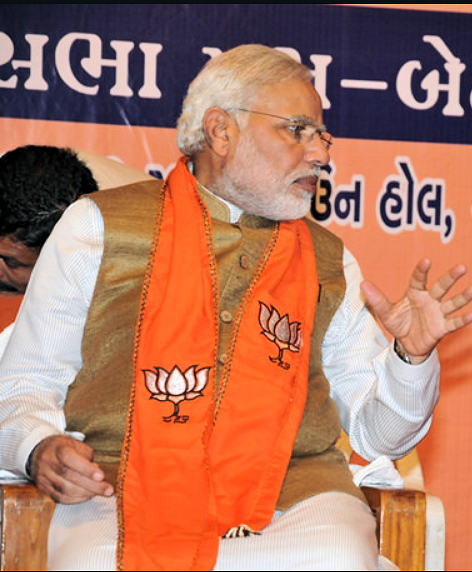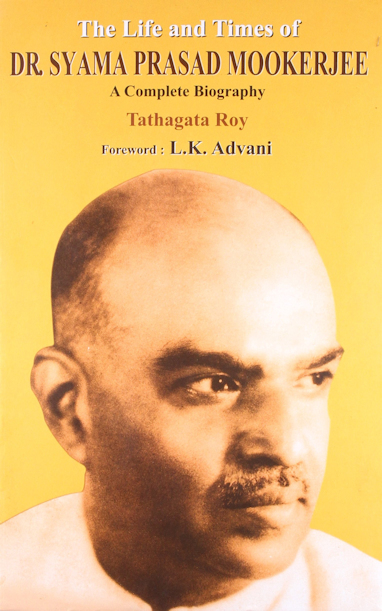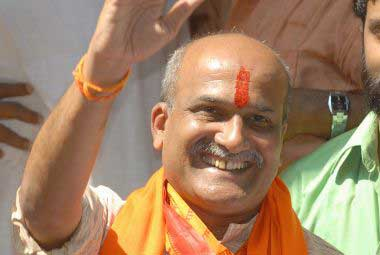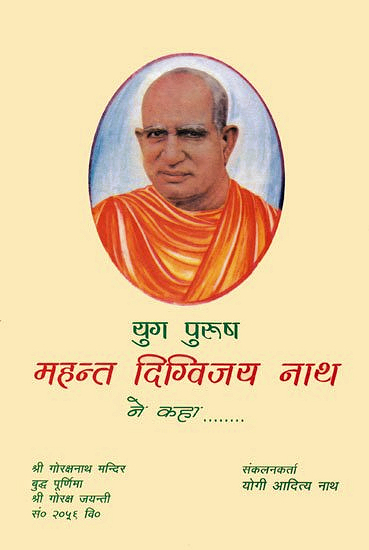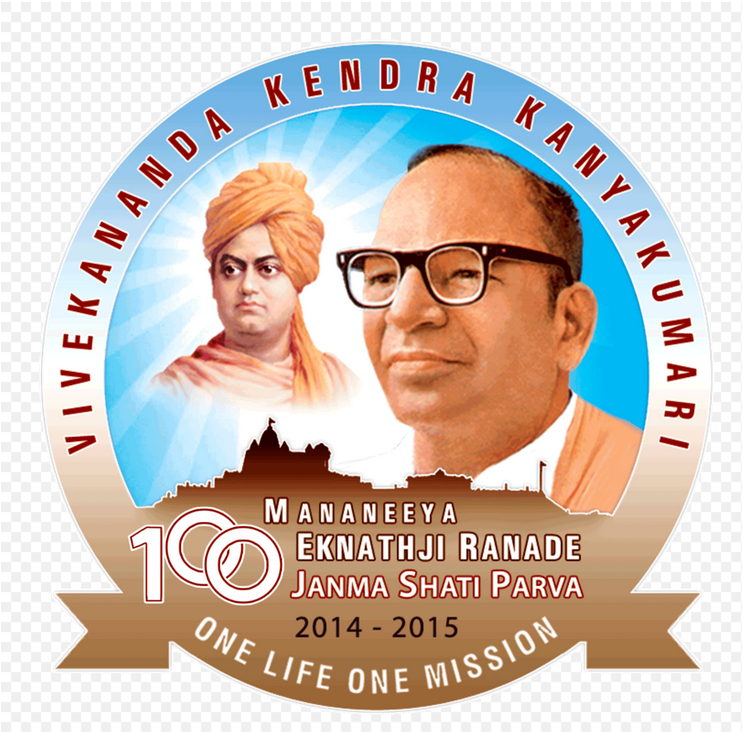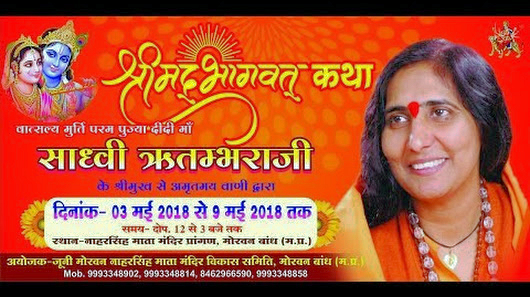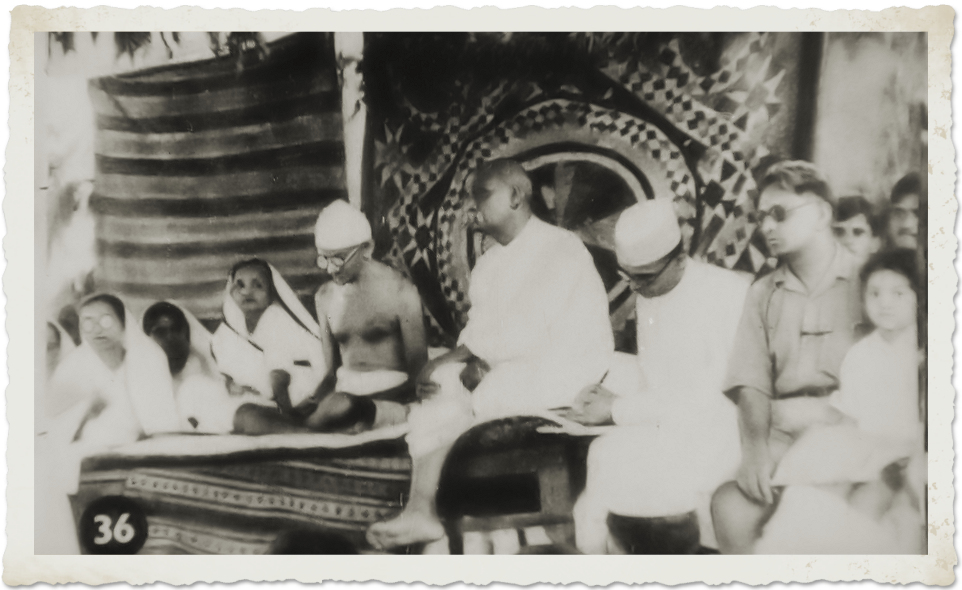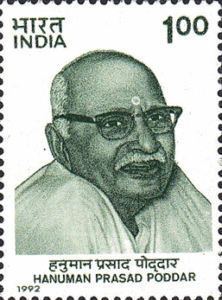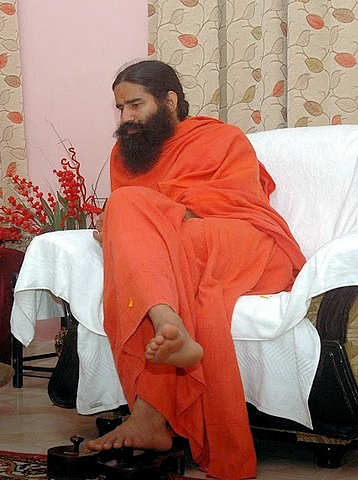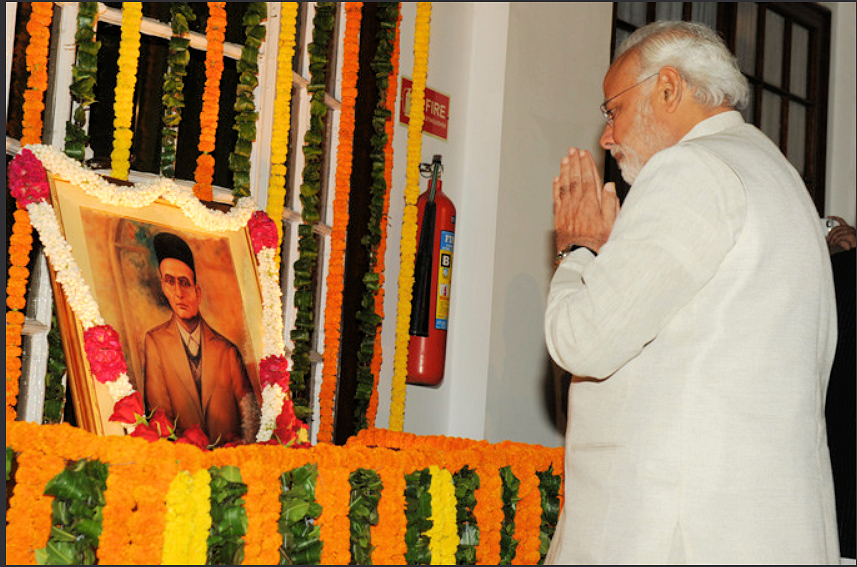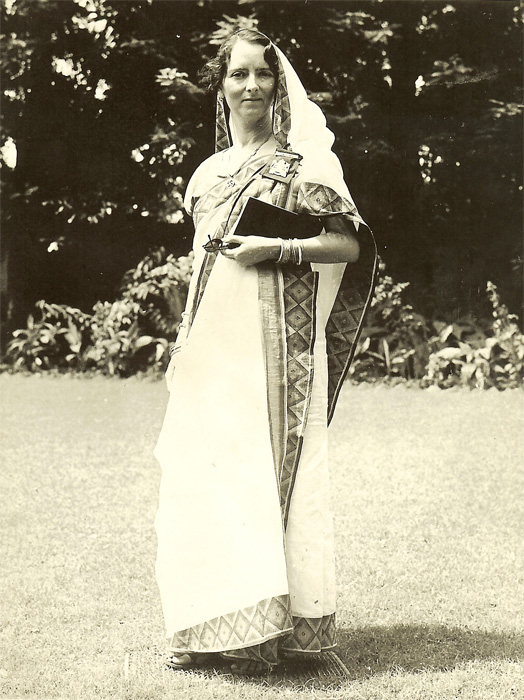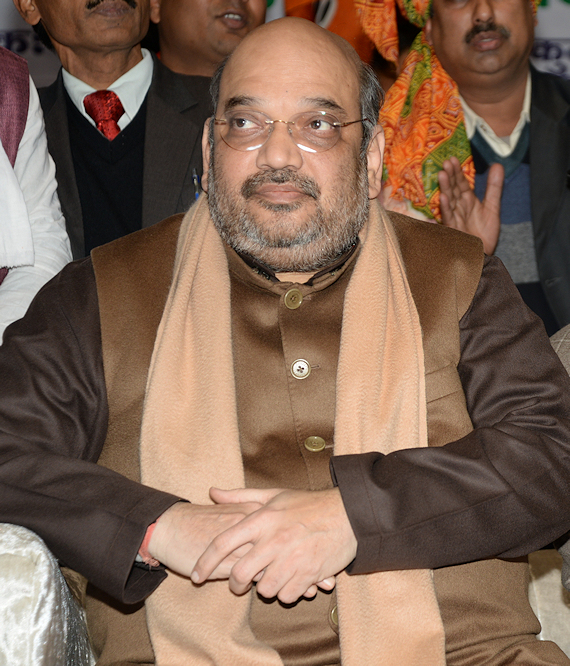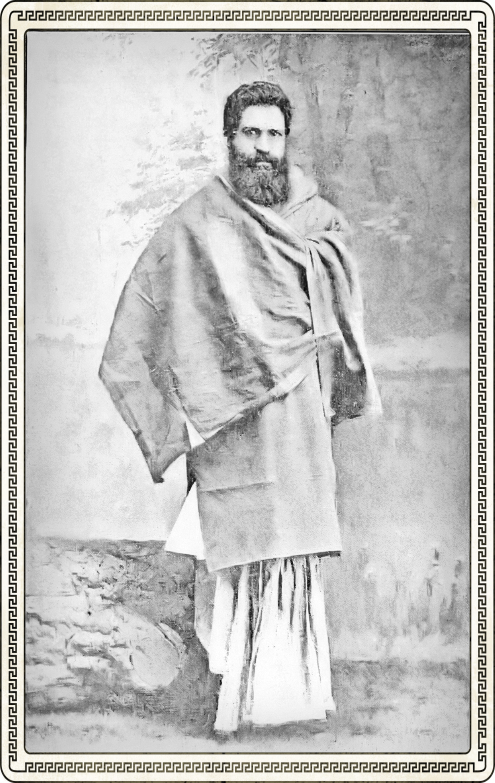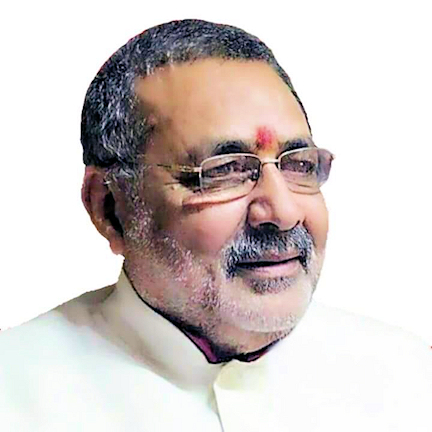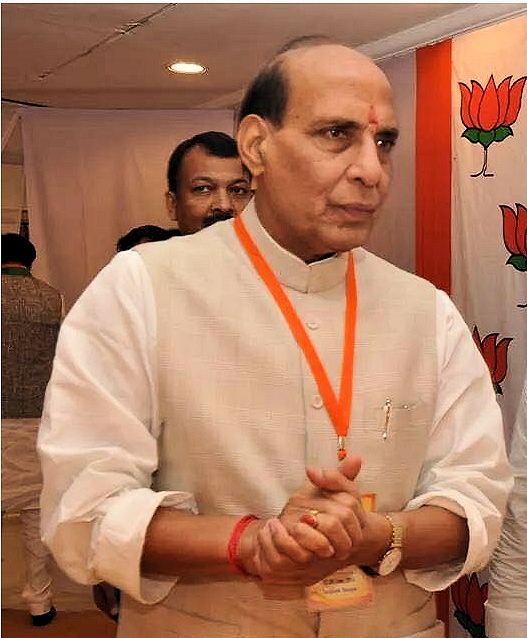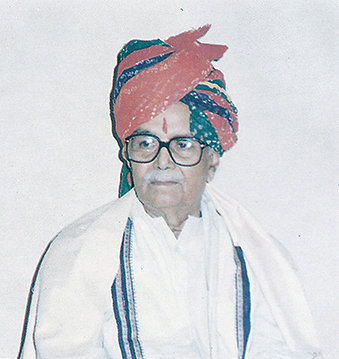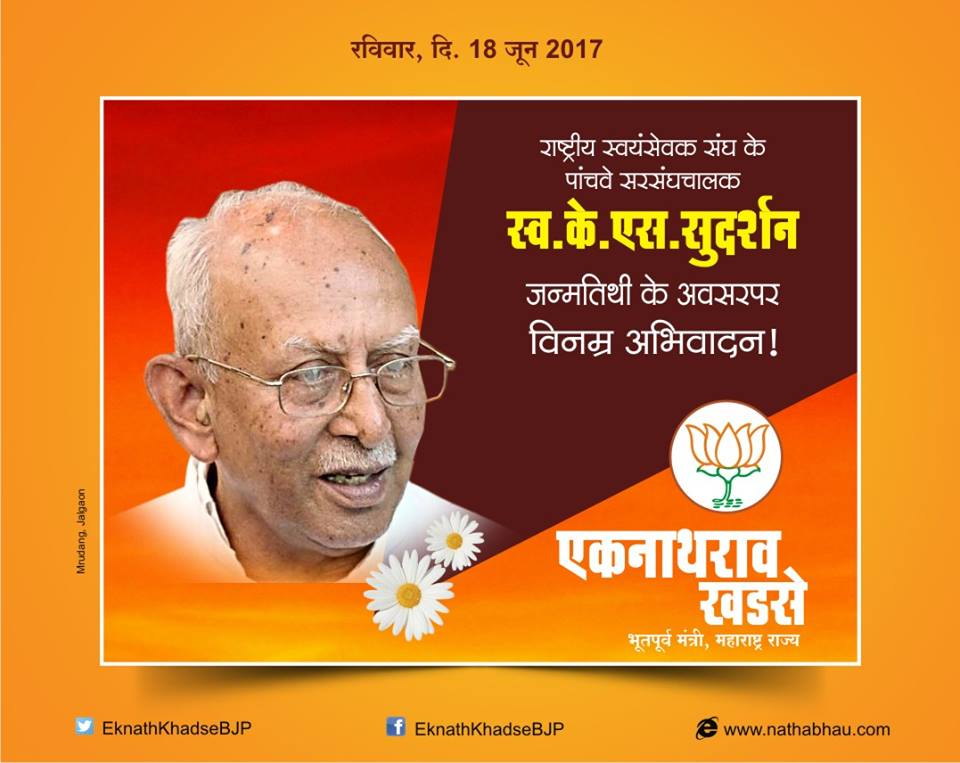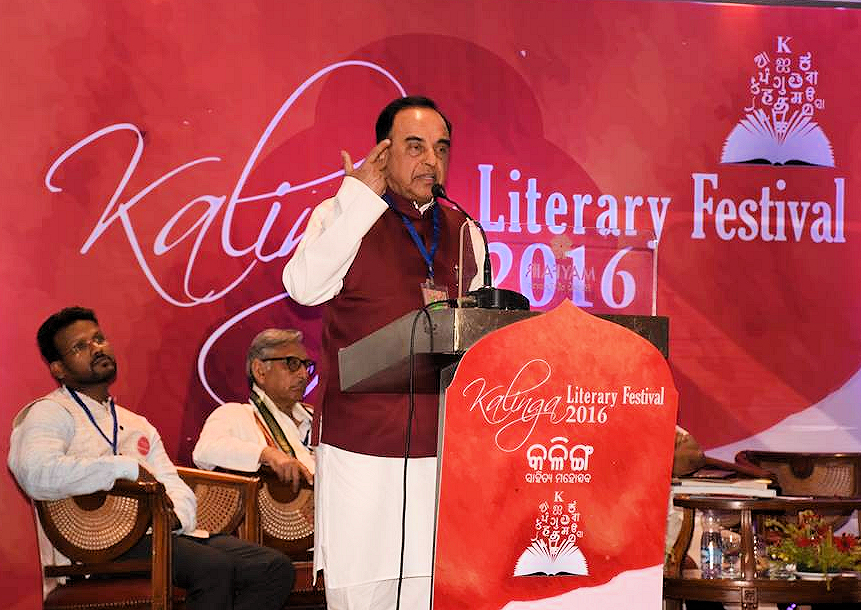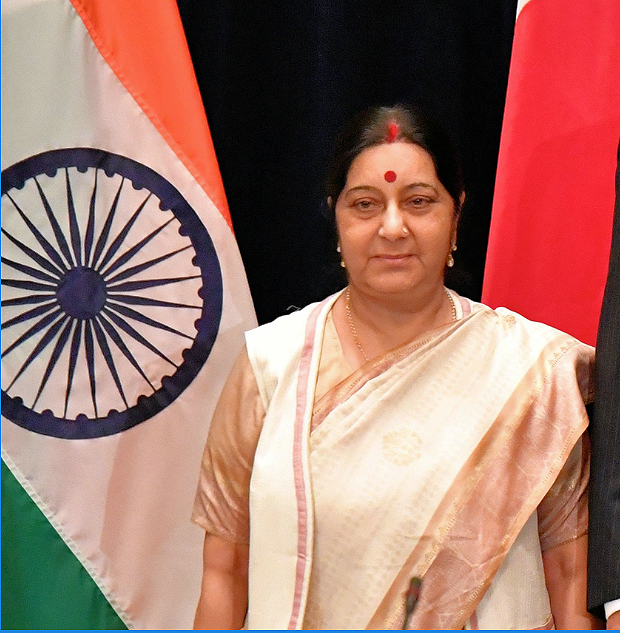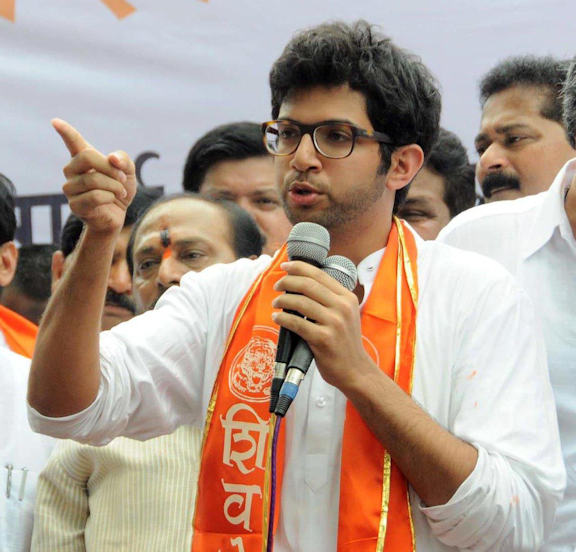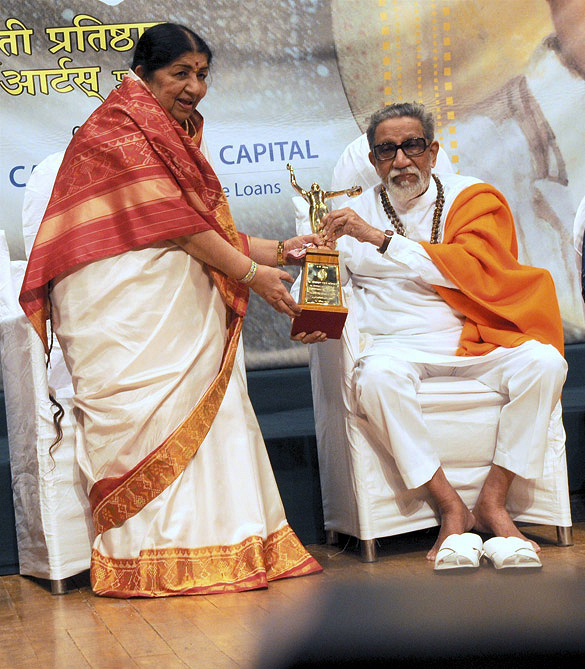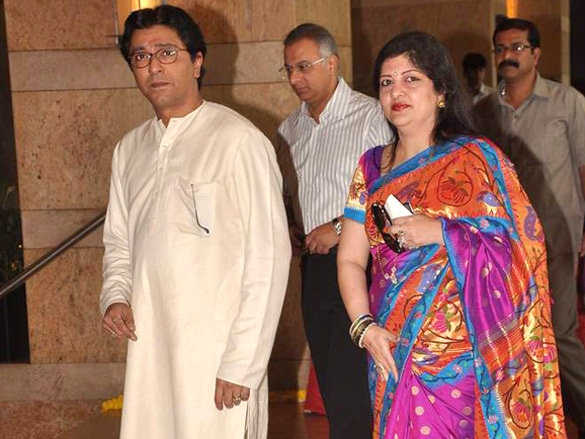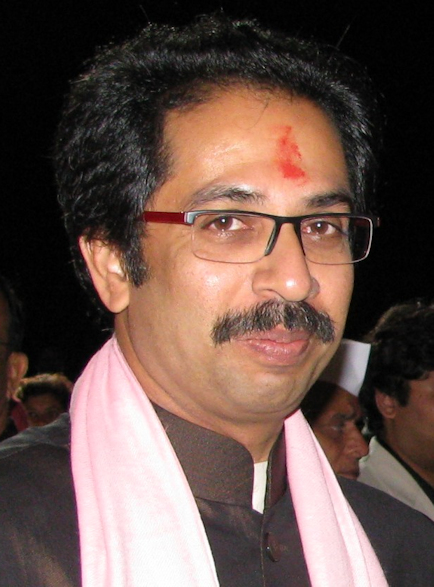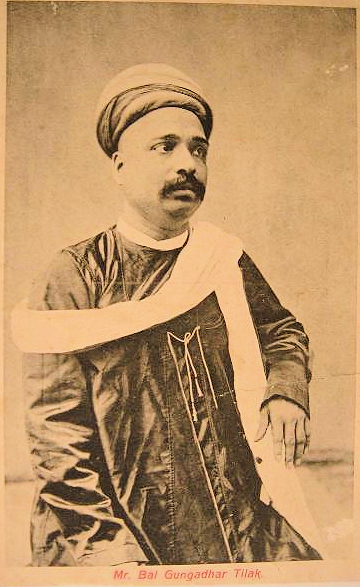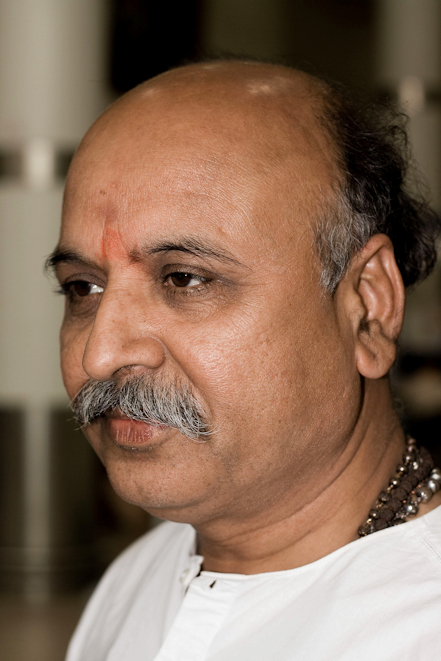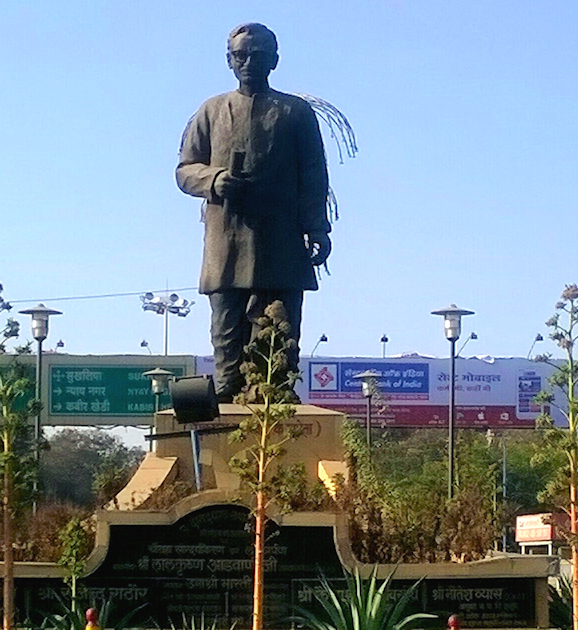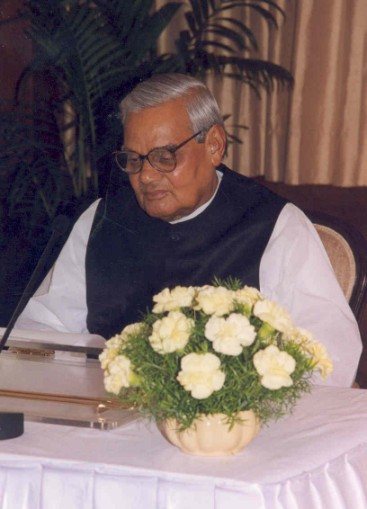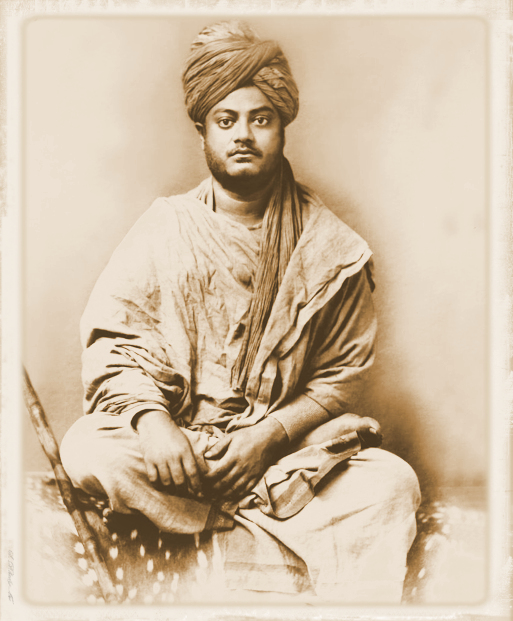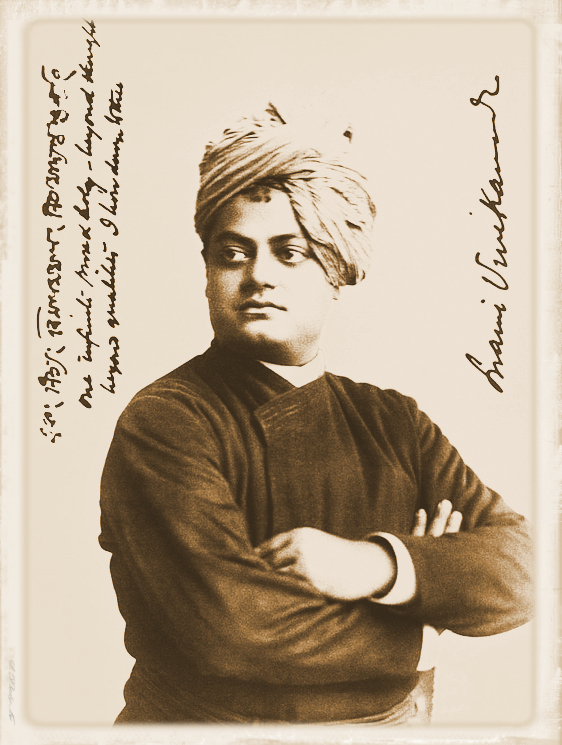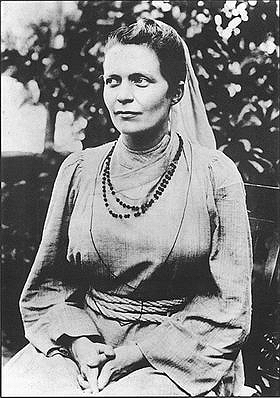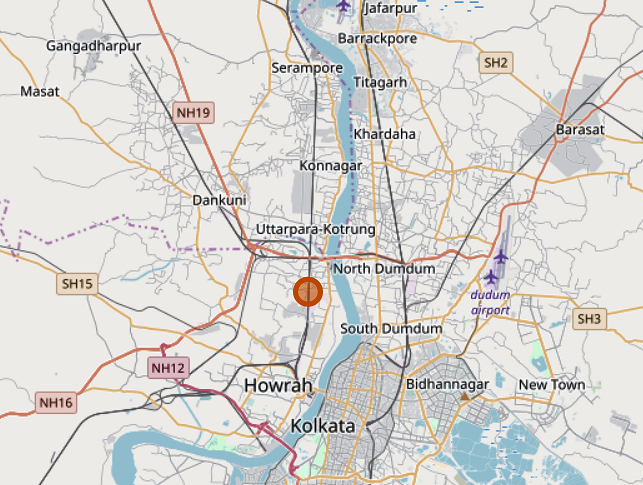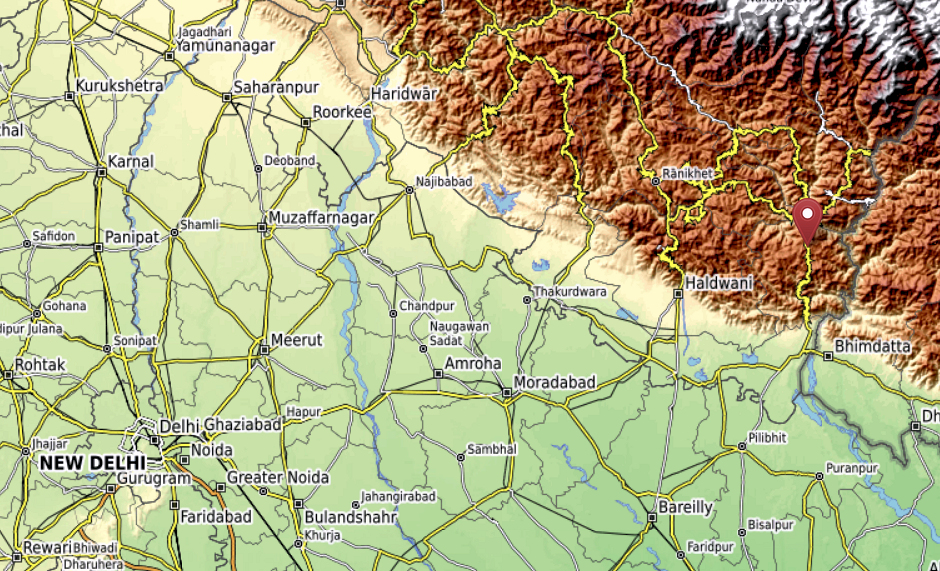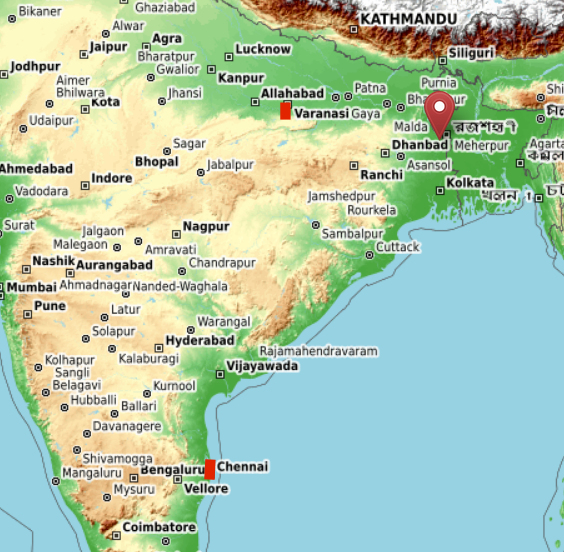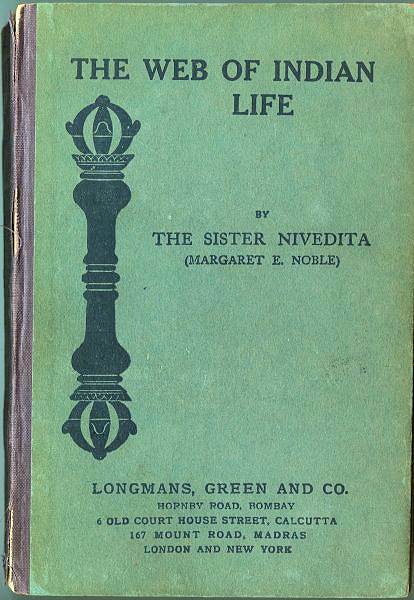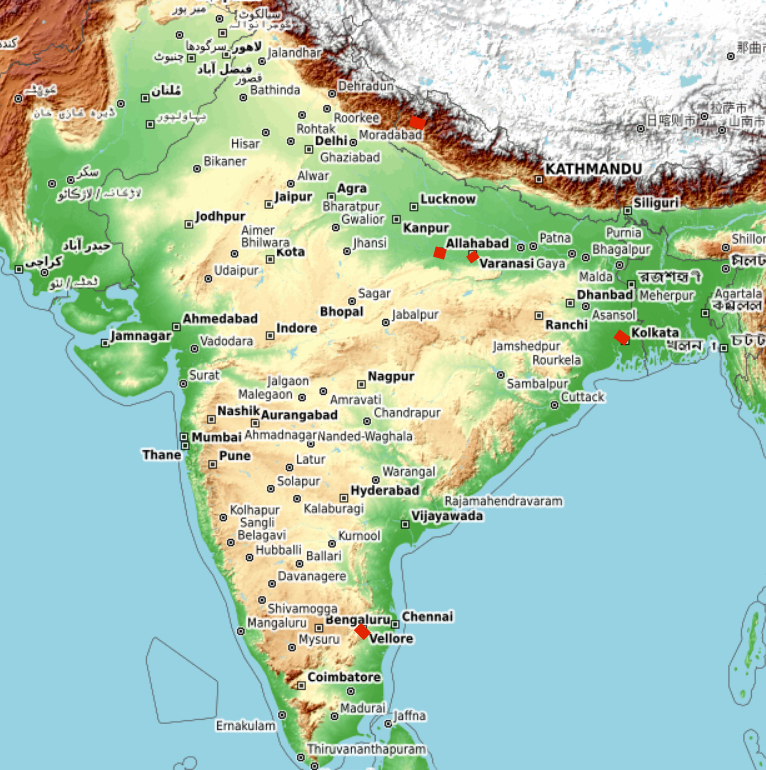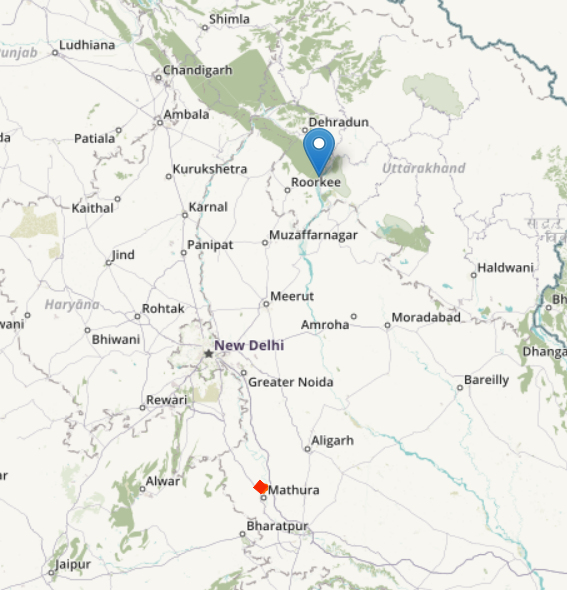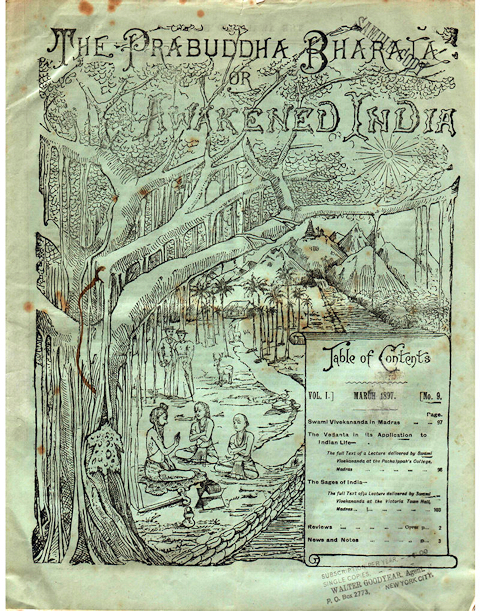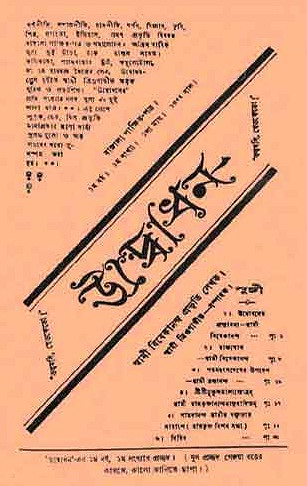|
"DAYĀNANDA SARASVATĪ
[Gujarati: દયાનંદ સરસ્વતી].
(1827-1883.)
The Indian newspapers contain the
announcement of the death of Dayānanda Sarasvatī. Most English readers, even
some old Indians, will ask, Who was Dayānanda Sarasvatī ? — a question that
betrays as great a want of familiarity with the social and religious life of
India as if among us any one were to ask, Who was Dr. Pusey [Edward
Bouverie Pusey, 1800 - 1882] ? Dayānanda Sarasvatī was the
founder and leader of the Ārya-Samāj, one of the most influential of the modern
sects in India. He was a curious mixture, in some respects not unlike Dr. Pusey.
He was a scholar, to begin with, deeply read in the theological literature of
his country. Up to a certain point he was a reformer, and was in consequence
exposed to much obloquy and persecution during his life, so much so that it is
hinted in the papers that his death was due to poison administered by his
enemies. He was opposed to many of the abuses that bad crept in, as he well
knew, during the later periods of the religious growth of India, and of which,
as is known now, no trace can be found in the ancient sacred books of the
Brāhmans, the Vedas. He was opposed to idol worship, he repudiated caste, and
advocated female education and widow marriage, at least under certain
conditions. In his public disputations with the most learned Pandits at
Benares and elsewhere, he was generally supposed to have been victorious, though
often the aid of the police had to be called in to protect him from the blows
of his conquered foes. He took his stand on the Vedas. Whatever was not to be
found in the Vedas he declared to be false or useless ; whatever was found
in the Vedas was to him beyond the reach of controversy. Like all the ancient
theologians of India, he looked upon the Vedas as divine revelation. That idea
seems to have taken such complete possession of his mind that no argument could
ever touch it.
It is here where
Dayānanda Sarasvatī’s movement took a totally different direction from that of
Rāmmohun Roy [Bengali: রাম মোহন রায়,
1772 - 1833]. Rammohun Roy also and his followers held for a time to the
revealed character of the Vedas, and in all their early controversies with
Christian missionaries they maintained that there was no argument in favor of
the divine inspiration of the Bible which did not apply with the same or even
greater force to the Vedas. As the Vedas at that time were almost inaccessible,
it was difficult for the missionaries to attack such a position. But when at a
later time it became known that the text of the Vedas, and even their ancient
commentaries, were being studied in Europe, and were at last actually printed in
England, the friends of Rammohun Roy, honest and fearless as they have always
proved themselves to be, sent some young scholars to Benares to study the Vedas
and to report on their contents. As soon as their report was received,
Debendranāth Tagore [Bengali:
দেবেন্দ্রনাথ ঠাকুর, 1817 – 1905], the
head of the Brāhma-Samāj [Bengali: ব্রাহ্ম সমাজ],
saw at once that, venerable as the Vedas might be as relics of a former age,
they contained so much that was childish, erroneous, and impossible as to make
their descent from a
divine source utterly untenable. Even he could hardly be
expected to perceive the real interest of the Vedas, and their perfectly unique
character in the literature of the world, as throwing light on a period in the
growth of religion of which we find no traces anywhere else.
But Dayānanda,
owing chiefly to his ignorance of English, and, in consequence, his lack of
acquaintance with other sacred books, and his total ignorance of the results
obtained by a comparative study of religions, saw no alternative between either
complete surrender of all religion or an unwavering belief in every word and
letter of the Vedas. To those who know the Vedas such a position would seem
hardly compatible with honesty; but, to judge from Dayānanda’s writings, we
cannot say that he was consciously dishonest. The fundamental idea of
his religion was revelation. That revelation had come to him in the Vedas. He
knew the Vedas by heart; his whole mind was saturated with them. He published
bulky commentaries on two of them, the Ŗig-Veda and Yajur-Veda. One might almost
say that he was possessed by the Vedas. He considered the Vedas not only as
divinely inspired, or rather expired, but as prehistoric or prehuman. Indian
casuists do not understand how Christian divines can be satisfied with
maintaining the divine origin of their revelation, because they hold that,
though a revelation may be divine in its origin, it is liable to every kind of
accident if the recipient is merely human. To obviate this difficulty, they
admit a number of intermediate beings, neither quite divine nor quite
human, through whom the truth, as breathed forth from God, was safely handed
down to human beings. If any historical or geographical names occur in the
Vedas, they are all explained away, because, if taken in their natural sense,
they would impart to the Vedas an historical or temporal taint. In fact, the
very character which we in Europe most appreciate in the Vedas — namely, the
historical — would be scouted by the orthodox theologians of India, most of all
by Dayānanda Sarasvatī. In his commentary on the Ŗig-Veda, written in Sanskrit,
he has often been very bard on me and my own interpretation of Vedic hymns,
though I am told that he never travelled without my edition of the Rig-Veda. He
could not understand why I should care for the Veda at all, if I did not
consider it as divinely revealed. While I valued most whatever indicated human
sentiment in the Vedic hymns, whatever gave evidence of historical growth, or
reflected geographical surroundings, he was bent on hearing in it nothing but
the voice of Brahman. To him not only was everything contained in the Vedas
perfect truth, but he went a step further, and by the most incredible
interpretations succeeded in persuading himself and others that everything worth
knowing, even the most recent inventions of modern science, were alluded to in
the Vedas. Steam-engines, railways, and steam-boats, all were shown to have been
known, at least in their germs, to the poets of the Vedas, for Veda, he
argued, means Divine Knowledge, and how could anything have been hid from that?
Such views may seem strange to us, though, after all, it is not so very long ago
that an historical and critical interpretation of the Bible would have roused
the same opposition in England as my own free and independent interpretation of
the Rig-Veda has roused in the breast of Dayānanda Sarasvatī.
There is a
curious autobiographical sketch of his life, which was published some time ago
in an Indian journal. Some doubts, however, have been thrown on the correctness
of the English rendering of that paper, and we may hope that Dayānanda’s
pupil, Pandit Shyāmaji Kṛishnavarmā [Gujarati: શ્યામજી કૃષ્ણ
વર્મા, 1857 - 1930], now a B. A. of
Balliol College, will soon give us a more perfect account of that remarkable
man.
In the mean time
an abstract of what Dayānanda has told us himself of his life may be
interesting, as introducing us into an intellectual and religious atmosphere of
which even those who live in India and are in frequent contact with the Hindus
know very little.
Dayānanda writes:
“I was born
in a family of Udīchya (Northern) Brāhmans, in a town belonging to the Rājah
of Morvi [Gujarati: મોરબી],
in the province of Kāthiāwār [Gujarati: કાઠીયાવાડ]. If
I refrain from naming my parents, it is because my duty forbids me. If my
relations knew of me, they would call me back, and then, once more face to
face with them, I should have to remain with them, attend to their wants,
and touch money. Thus the holy work of the reform to which I have dedicated
my life would be jeopardized.
“I was hardly
five years of age when I began to study the Devanāgarī [Sanskrit: देवनागरी]
alphabet. According to the custom of my family and caste, I was made to
learn by rote a large number of mantras or hymns with commentaries. I was
but eight when I was invested with the sacred Brāhmanic thread, and taught
the Gāyatrī [Sanskrit: गायत्री] hymn, the Sandhyā [Sanskrit: सन्ध्या]
(morning and evening) ceremony, and the Yajur-veda-samhitā [Sanskrit:
यजुर्वेदसंहिता], beginning with the Rudrādhyāya [Sanskrit: रुद्राध्याय]. As
my father belonged to the Śiva-sect, I was early taught to worship the
uncouth piece of clay representing Śiva, known as the Pārthiva Linga
[Sanskrit: पार्थिवलिंग]. My mother, fearing for my health, opposed my
observing the daily fasts enjoined on the worshippers of Śiva, and as my
father sternly insisted on them, frequent quarrels arose between my
parents. Meanwhile I studied Sanskrit grammar, learnt the Vedas by heart,
and accompanied my father in his visits to the shrines and temples of Śiva.
My father looked upon the worship of Śiva as the most divine of all
religions. Before I was fourteen I had learnt by heart the whole of the
Yajur-veda-samhitā [Sanskrit: यजुर्वेदसंहिता], parts of the other Vedas, and
of the Śabdarūpāvali [Sanskrit: शब्दरूपावलि] (an elementary Sanskrit
grammar), so that my education was considered as finished.
“My father
being a banker and Jamādār (Town revenue collector and magistrate) we lived
comfortably. My difficulties began when my father insisted on initiating me
in the worship of the Pārthiva Linga [Sanskrit: पार्थिवलिंग]. As a
preparation for this solemn act I was made to fast, and I had then to follow
my father for a night’s vigil in the temple of Śiva. The vigil is divided
into four parts of praharas [Sanskrit: प्रहर], consisting of three hours
each. When I had watched six hours I observed about midnight that the
Pūjāris, the temple-servants, and some of the devotees, after having
left the inner temple, had fallen asleep. Knowing that this would destroy
all the good effects of the service, I kept awake myself, when I observed
that even my father had fallen asleep. While I was thus left alone I began
to meditate. Is it possible, I asked myself, that this idol I see bestriding
his bull before me, and who, according to all accounts, walks about,
eats, sleeps, drinks, holds a trident in his hand, beats the drum, and can
pronounce curses on men, can be the great Deity, the Mahādeva [Sanskrit:
महादेव] , the Supreme Being? Unable to resist such thoughts any longer I
roused my father, asking him to tell me whether this hideous idol was the
great god of the scriptures. ‘ Why do you ask? ’ said my father. ‘ Because,’
I answered, ‘I feel it impossible to reconcile the idea of an omnipotent
living God with this idol, which allows the mice to run over his body and
thus suffers himself to be polluted without the slightest protest.’ Then
my father tried to explain to me that this stone image of the Mahādeva
[Sanskrit: महादेव], having been consecrated by the holy Brāhmans, became, in
consequence, the god himself, adding that as Śiva cannot be perceived
personally in this Kali-yuga [Sanskrit: कलियुग], we have the idol in which
the Mahādeva [Sanskrit: महादेव] is imagined by his votaries. I was not
satisfied in my mind, but feeling faint with hunger and fatigue, I begged to
be allowed to go home. Though warned by my father not to break my fast, I
could not help eating the food which my mother gave me, and then fell
asleep.
“ When my
father returned he tried to impress me with the enormity of the sin I had
committed in breaking my fast. But my faith in the idol was gone, and all I
could do was to try to conceal my lack of faith, and devote all my time to
study. I studied at that time the Nighantu [Sanskrit: निघन्तु] and Nirukta
[Sanskrit: निरुक्त] (Vedic glossaries), the Pūrvamīmāṁsā [Sanskrit:
पूर्वमीमांसा] (Vedic philosophy), and Karmakaṇḍa [Sanskrit: कर्मकण्ड] or the
Vedic ritual.
“There were
besides me in our family two younger sisters and two brothers, the youngest
of them being born when I was sixteen. On one memorable night one of my
sisters, a girl of fourteen, died quite suddenly. It was my first
bereavement, and the shock to my heart was very great. While friends and
relations were sobbing and lamenting around me, I stood like one petrified,
and plunged hi a profound dream. ‘Not one of the beings that ever lived
in this world could escape the cold hand of death,’ I thought; ‘I too may be
snatched away at any time, and die. Whither then shall I turn to alleviate
this human misery? Where shall I find the assurance of, and means of
attaining Moksha [Sanskrit: मोक्ष], the final bliss ? ’ It was then and
there that I came to the determination that I
would find it, cost whatever it might, and thus
save myself from the untold miseries of the dying moments of an unbeliever.
I now broke for ever with the mummeries of fasting and penance, but I kept
my innermost thoughts a secret from everybody. Soon after, an uncle, a very
learned man, who had shown me great kindness, died also, his death
leaving me with a still profounder conviction that there was nothing stable,
nothing worth living for in this world.
“At this time
my parents wished to betroth me. The idea of married life had always been
repulsive to me, and with great difficulty I persuaded my father to postpone
my betrothal till the end of the year. Though I wished to go to Benares
[Hindi:
वाराणसी] to
carry on my study of Sanskrit, I was not allowed to do so, but was sent to
an old priest, a learned Pandit, who resided about six miles from our town.
There I remained for some time, till I was summoned home to find everything
ready for my marriage. I was then twenty-one, and as I saw no other escape,
I resolved to place an eternal bar between myself and marriage.
“Soon after I
secretly left my home, and succeeded in escaping from a party of horsemen
whom my father had sent after me. While travelling on foot, I was robbed by
a party of begging Brāhmans of all I possessed, being told by them that the
more I gave away in charities, the more my self-denial would benefit me in
the next life. After some time I arrived at the town of Sayla [Gujarati:
સાયલા],
where I knew of a learned scholar named Lālā Bhagat, and with another
Brahmacārin [Sanskrit: ब्रह्मचारिन्], I determined to join his order.
“On my
initiation I received the name of Śuddha Caitanya [Sanskrit: शुद्धचैतन्य]
(pure thought), and had to wear a reddish-yellow garment. In this new attire
I went to the small principality of Kouthagangad [Kotha Gangad], near
Ahmadabad [Gujarati: અમદાવાદ],
where to my misfortune I met with a Bairāgi (Vairāgin, hermit), well
acquainted with my family. Having found out that I was on my way to a
Mella (religious fair) held at Sidhpur, he informed my father; and while I
was staying in the temple of Mahādeva at Nīlakaṇṭha with Darādi Svāmi
and other students, I was suddenly confronted by my father. In spite of all
my entreaties he handed me over as a prisoner to some Sepoys whom he had
brought with him on purpose. However, I succeeded in escaping once more, and
making my way back to Ahmadabad [Gujarati:
અમદાવાદ], I proceeded to
Baroda [Gujarati: વડોદરા].
There I settled for some time, and at Chetan Math (a temple) held
several discourses with Brahmānanda and a number of Brahmacārins and
Sannyāsins, on the Vedanta philosophy. From Brahmānanda I learnt clearly
that I am Brahman [Sanskrit: ब्रह्मन्], the jīva [Sanskrit: जीव] (soul) and
Brahman being one.
“I then
repaired to Benares and made the acquaintance of some of the best scholars
there, particularly that of Saccidānanda Paramahaṁsa. On his advice I
afterwards proceeded to Chānoda Kanyāli on the banks of the Narbada (Narmadā
[Hindi: नर्मदा]),
and met there for the first time with real Dīkshitas [Sanskrit: दीक्षित],
initiated in the Yoga-philosophy. I was placed under the tuition of
Paramānanda Paramahaṁsa, studying such books as the Vedānta-sāra [Sanskrit:
वेदान्तस्सार], Vedānta-paribhāshā [Sanskrit: वेदान्तपरिभाषा],1 etc.
I then felt anxious to be initiated in the order of the Dīkshitas [Sanskrit:
दीक्षित] and to become a Sannyāsin [Sanskrit: संन्यासिन्], and though I was
very young, I was with some difficulty consecrated, and received the staff
of the Sannyasin. My name was then changed into Dayānanda Sarasvatī
[Sanskrit: दयानन्द सरस्वती].
1 These are not Yoga books, but very elementary treatises on
Vedānta philosophy.
“After some
time. I left Chānoda and proceeded to Vyāsāśrama to study Yoga, ascetic
philosophy, under Yogānanda. I then spent some more time in practicing Yoga,
but in order to acquire the highest perfection in Yoga I had to return to
the neighborhood of Ahmadabad, where two Yogins imparted to me the final
secrets of Yoga-vidyā. I then travelled to the mountain of Abu [Hindi:
माउंट आबू] in Rājputān, to
acquire some new modes of Yoga, and in 1855 joined a great meeting
at Hardwār [Hindi: हरिद्वार],2
where many sages and philosophers meet for the study and practice of Yoga.3
2 Every twelfth year, when the planet Jupiter is in Aquarius, a
great feast takes place at Hardwār, called Kumbha-melā. About 300,000
people are said to attend the festival. See Hunter,
lmperial Gazetter,
s. v. Hardwār.
3 This practice of Yoga is described in the Yoga-sūtras. Much
of it consists in abstemiousness and regulation and suspension of
breath. From this arises tranquillity of mind, supernatural knowledge,
and different states of ecstasy called Samādhi.
“At Tidee,
where I spent some time, I was horrified at meeting with meat-eating
Brāhmans, still more at reading some of their sacred books, the
Tantras, which sanction every kind of immorality.
“I then
proceeded to Śrīnagar [Kashmiri: سِری نَگَر],
and taking up my abode at a temple on Kedār Ghāt, I made the acquaintance of
an excellent Sādhu, called Gangāgiri, with whom I studied and discussed
philosophical books. After two months I, in company with other ascetics,
travelled further to Rudra Prayāga [Hindi: रुद्रप्रयाग],
till we reached the shrine of Agastya Muni. Still further north is Śivapura,
where I spent four months of the cold season, returning afterwards alone to
Kedār Ghāt, and to Gupta Kāśī [Hindi:
गुप्तकाशी] (hidden Benares).”
2
2
A sacred spot whre the
old town of Kāśī is supposed to be buried.
After
this follows a description of various journeys to the north, where
in the recesses of the Himālaya mountains Dayānanda hoped to find
the sages who are called Mahātmas, and are supposed to be in
possession of the highest wisdom. These journeys are described very
graphically, but their details have been called in question, and may
therefore be passed over. That there are hermits living in the
Himālaya forests, that some of them are extremely learned, and that
others are able to perform extraordinary acts of austerity, is well
known. But equally well known are the books which they study, and
the acts of Yoga which they perform, and there is really no kind
of mystery about them. They themselves would be the last to claim
any mysterious knowledge beyond what the Śāstras supply. Nor are
such Mahātmas to be found in the Himālayan recesses only. India is
full of men who seek retirement, dwell in a small cell or cave,
sleep on the skin of a tiger or stag, abstain from flesh, fish, and
wine, never touch salt, and live entirely on fruits and roots.
It is a pity that
the rest of Dayānanda’s autobiography has never been published. It breaks off
with his various travels, and is full of accounts of his intense sufferings and
strange adventures. He seems in the end to have lived on rice and milk, finally
on milk only, but he indulged for a time in the use of bhang, hemp, which put
him into a state of reverie from which he found it difficult to rouse
himself. Here and there we catch a curious glimpse of the religious feelings of
the people.
“One day,” he writes, “when recovering from such a day-dream, I
took shelter on the veranda opposite the chief entrance to the
temple, where stood the huge statue of the Bull-god, Nandī.
Placing my clothes and books on its back I sat and meditated,
when suddenly, happening to throw a look inside the statue,
which was empty, I saw a man concealed inside. I extended my
hand towards him, and must have terrified him, as, jumping out
of his hiding-place, he took to his heels in the direction of
the village. Then I crept into the statue in my turn and slept
there for the rest of the night. In the morning an old woman
came and worshipped the Bull-god with myself inside. Later on
she returned with offerings of Gur (molasses) and a pot of Dahi
(curd milk), which, making obeisance to me, whom she evidently
mistook for the god himself, she offered and desired me to
accept and eat. I did not disabuse her, but, being hungry, ate
it all. The curd being very sour proved a good antidote for
the bhang, and dispelled all signs of intoxication,
which relieved me very much. I then continued my journey towards
the hills and that place where the Narmadā takes its rise.”
We should like
very much to have a trustworthy account of Dayānanda’s studies from 1856, when
we leave him in his autobiography, to 1880, when we find him again at Mirut [Hindi:
मेरठ] (“
Theosophist,” December, 1880). In 1881 we read of his public disputations
in every part of India (“Theosophist,” March, 1881). At a large convocation in
Calcutta [Bengali> কলকাতা],
about 300 Pandits from Gauḍa [Bengali:
গৌড়],
Navadīpa [Bengali: নবদ্বীপ],
and Kāśī [Hindi: काशी]
discussed the orthodoxy of his opinions. Dayānanda Sarasvatī had somewhat
modified his opinions as to the divine character of the Veda. He now held that,
of the whole Vedic literature, the Mantras or hymns only should be considered as
divinely inspired. The Brāhmaṇas seemed to him to contain too many things which
were clearly of human origin, and in order to be consistent he admitted of the
Upanishads also those only as of superhuman origin which formed part of the
Saṁhitās.
Such opinions,
and others of a similar character, were considered dangerous, and at the meeting
in question the following resolutions were carried against him: —
-
That the Brāhmaṇas are as valid and authoritative as the
Mantras, and that the other Smṛtis or law-books are as valid and
authoritative as Manu.
-
That the worship of Viṣṇu, Śiva, Durgā, and other Hindu deities,
the performance of the Śrāddha ceremonies after death, and
bathing in the Ganges, are sanctioned by the Śāstras.
-
That in the first hymn of the Rig-Veda, addressed to Agni, the
primary meaning of Agni is fire, and its secondary meaning is
God.
-
That sacrifices are performed to secure salvation.
But although the
decisions were adverse to Dayānanda, the writer of the report adds:
“The mass of young Hindus are not Sanskrit scholars, and it is
no wonder that they should be won over by hundreds
to Dayānanda’s views, enforced as they are by an oratorical
power of the highest order and a determined will-force that
breaks down all opposition.”
In his later
years he was not only a teacher and lecturer, but devoted his time to the
publication of Sanskrit texts also. He published the hymns of the Rig-Veda and
Yajur-Veda, with a commentary of his own, the strange character of which has
been touched upon before. He also published controversial papers, all showing
the same curious mixture of orthodoxy and free-thought. He believed to the end
in the inspiration of the Veda, though not of the whole of the Veda, but of
certain portions only. These portions he thought he was competent to select
himself, but by what authority he could not tell.
He died at the
age of fifty-nine, at Ajmere [Hindi: अजमेर],
at 6 P. M. on Tuesday, the 30th of October last. There was a large funeral
procession, the followers of Dayānanda chanting hymns from the Vedas. The body
was burned on a large pile. Two maunds of sandal-wood, eight maunds of common
fuel, four maunds of ghee (clarified butter), and two and a half seers of
camphor were used for the cremation.
Whether
Dayānanda’s sect will last is difficult to say. The life-blood of what there is
of national religion in India still flows from the Veda. As in ancient times
every new sect, every new system of philosophy was tested by the simple
question, Do you believe in the superhuman (apaurusheya) origin of the Veda? so
all the modern religious and philosophical movements, if they profess to be
orthodox, are weighed in the same balance. The Brāhma-Samāj, after its surrender
of the Veda, became ipso
facto heterodox. The Ārya-Samāj. though looked
upon with suspicion, remains orthodox, at least so long as it upholds with
Dayānanda Sarasvatī the divine character of the Veda.
Those who are
ignorant of what is going on beneath the mere surface, have often declared that
the Vedas have ceased to be the Sacred Books of India, that they have been
supplanted by Purāṇas and Tantras, and that they are hardly understood now by
any native scholar. The last assertion may be true in a certain sense, but for
all the rest, those who know anything of the real issues of religion in India
know, or ought to know, that they depend to-day, as three thousand years ago, on
the Veda.
The leader of the
orthodox Ārya-Samāj, Dayānanda Sarasvatī, the determined champion of the literal
inspiration of the Veda, is hardly dead before his followers flock together from
all parts of India to carry on their Vedic Propaganda. A meeting was held on
November 8 with a view of establishing an Anglo-Vedic College. Between seven and
eight thousand rupees, or, according to another statement, 38,282 rupees, were
subscribed by those present. An admirer of Dayānanda, living at Amritsir [Panjabi
ਅੰਮ੍ਰਿਤਸਰ], promised ten thousand
rupees, and the Ferozepore [Panjabi:
ਫ਼ਿਰੋਜ਼ਪੁਰ]
Ārya-Samāj collected two thousand rupees. This Vedic College has for its object
the revival of the knowledge of the ancient scriptures of the Hindus, and is to
work by the side of, and in friendly accord with, Syed Ahmed Khan's [Urdu:
سید احمد خان; 17 October 1817 – 27 March 1898]
Mohammedan College at Aligarh [Hindi:
अलीगढ़],
and the numerous Christian Missionary Societies now established in India. The
edition of the Yayur-veda-saṁhitā, text, commentary, and translation, is to be
continued from the manuscript left by Dayānanda. Of the Rig-veda-saṁhitā, the
manuscript, as prepared by him, extends to the seventh Maṇḍala only.
India is in a
process of religious fermentation, and new cells are constantly thrown out,
while old ones burst and disappear. For a time this kind of liberal orthodoxy
started by Dayānanda may last; but the mere contact with Western thought, and
more particularly with Western scholarship, will most likely extinguish it. It
is different with the Brāhma-Samāj, under Debendranath Tagore [Bengali:
দেবেন্দ্রনাথ ঠাকুর, 1817 – 1905)]
and Keshub Chunder Sen [Bengali: কেশব চন্দ্র সেন,
1838 - 1884]. They do not fear the West; on the contrary, they welcome it; and
though that movement, too, may cliango its name and character, there is every
prospect that it will in the end lead to a complete regeneration in the
religious life of India."
[Quelle: Müller, F. Max (Friedrich Max) <1823
- 1900>: Biographical essays. -- New York : Scribener, 1884. -- S. 162 -
177] |
